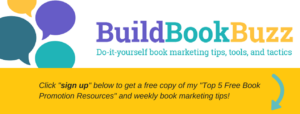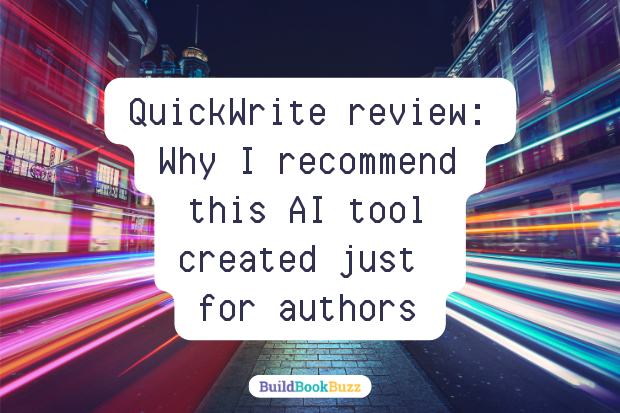 You’ve probably heard lots of chatter about artificial intelligence (AI) writing tools recently. ChatGPT from OpenAI is getting the most attention, and not all of it is good.
Users have documented problems that include capacity issues (you can’t always use it when you need to) and inaccurate information. Inaccuracy isn’t unique to this resource, though – it’s something to watch out for with all AI tools.
People are also concerned about bias picked up from information fed into the system and copyright issues.]]>
You’ve probably heard lots of chatter about artificial intelligence (AI) writing tools recently. ChatGPT from OpenAI is getting the most attention, and not all of it is good.
Users have documented problems that include capacity issues (you can’t always use it when you need to) and inaccurate information. Inaccuracy isn’t unique to this resource, though – it’s something to watch out for with all AI tools.
People are also concerned about bias picked up from information fed into the system and copyright issues.]]>Affiliate Disclosure: This post contains affiliate links, which means if you click on them and make a purchase, I will receive a small commission (at no extra charge to you).
You’ve probably heard lots of chatter about artificial intelligence (AI) writing tools recently. ChatGPT from OpenAI is getting the most attention, and not all of it is good.
Users have documented problems that include capacity issues (you can’t always use it when you need to) and inaccurate information. Inaccuracy isn’t unique to this resource, though – it’s something to watch out for with all AI tools.
People are also concerned about bias picked up from information fed into the system and copyright issues.
QuickWrite and copyright
As a writer, I worry about copyright violations, too. So, before I started using and recommending QuickWrite, an AI tool created specifically for authors, I asked C.J. McDaniel, the tool’s creator, about copyright and plagiarism issues.
Here’s what he told me:
“First, the content being generated is original, and the algorithms & AI do not copy information. They generate responses to your queries. Our AI engine has been trained on billions of words of content to give it its wealth of context and knowledge and to train it in how humans communicate. So the information you receive back will be original to you; even if someone else gave it the exact same information, they would still get different results.
“But taking that a step further, some of the things you can do to make sure that someone else doesn’t have the same content are the things that I believe we authors already naturally do. This includes things like making sure we give it original commands and then do edits or add expertise, knowledge, or creativity to further flesh out what is given.
“QuickWrite comes up super clean on all the plagiarism checkers we have tested and anything we have seen is always common phrases that authors would use anyway. On our plagiarism checks, we haven’t seen anything come even close to that 25% duplicate content that Google uses as its standard for duplicate content.”
My QuickWrite review starts with firsthand experience
With my copyright question out of the way, I first used QuickWrite to help me write a blog post on how to use YouTube for book marketing. Here’s the process I followed:
- I asked it to generate book marketing blog post topics.
- After making a selection, I asked it to outline the article.
- I then asked it to write each section of the outline, one section at a time (because that’s how the tool works).
- As I worked, I copied and pasted each section into the text editing box until I had an AI-generated draft.
It would have taken me several hours to write that draft. QuickWrite produced it in about 15 minutes.
I spent time removing repetitious content, editing the text so it was more my style and less generic, and adding my stories and anecdotes.
But wow – this was a timesaver! That’s just one reason I wanted to write this QuickWrite review for you.
QuickWrite is a writer’s assistant
Think of QuickWrite as a writer’s assistant, not as a writer that replaces you. You wouldn’t use it to write a book (um, right?). But you can use it to brainstorm titles and character names, write book descriptions, and even write the email announcing your book.
Artificial intelligence tools give you a starting point, not a finished product.
Completing an AI-developed project involves fact-checking nonfiction details, too. My bio is a good example of that. My QuickWrite-generated bio wasn’t accurate and neither was ChatGPT’s.
The lesson here? Write your own bio! (And do some fact-checking.)
QuickWrite was created for authors
The genius of QuickWrite is that C.J. McDaniel (the whiz behind MockupShots) created it specifically for authors. You won’t be tempted to waste time asking the software to solve math problems, write code, or find recipes.
And to make it as easy as possible to use, there are separate “task” sections for fiction and nonfiction and another for marketing-type writing.
You get access to all of it, making it especially useful to authors who write both fiction and nonfiction.
What can it do for you?
Save hours and hours of time with your creative process by using QuickWrite to:
- Develop well-rounded characters with backstories
- Master world-building that complements your storyline in seconds
- Get original scenarios that provide multiple options so you can create better stories
- Reduce research time with access to a vast pool of data and ideas for key elements and items for your book
- Craft a compelling email with the click of a button
- Create a nonfiction book title
- Write sales copy for your book with ease
- Create social media content for Facebook, Instagram, and LinkedIn articles
- Generate genre-specific blog content you can use to get traffic to your website or blog
- Create images
- Translate text (but I haven’t tested this)
Watch our videos to see how it works
After using this for the first time late last year, I created a short demo video to show authors what it can do, and how easy it is to use. (Note that it’s not a QuickWrite review — it’s a how-to demonstration.)
There are demo videos on the product sales pages, too. They’re more in-depth than mine, so be sure to watch them. You can get to the fiction demo here and the nonfiction video here.
Speaking of videos, I’ve been able to figure out how to do most tasks, but when I’ve been stumped, I’ve turned to the training videos in my QuickWrite account. That instant help makes a difference
Authors love QuickWrite
I love this tool – but don’t take my word for it.
I’ve received several testimonials from authors who purchased it on my recommendation. One told me:
“One particularly good aspect I found is generating character names. It saves trawling phone directories or googling to find suitable names for characters, and it appears to do it for any country. As I get used to it, I’m sure I’ll find a lot more to assist me. Thanks for introducing me to this software.”
And here’s another:
“Just wanted to THANK YOU for this QuickWrite info….. I’m stunned at how fabulous it is… actually makes me giggle out loud at how fast AI can come with plots, descriptions, etc. that would have taken me hours. Maybe days. Or even NEVER have thought of! Brilliant.”
No waiting
I especially appreciate that I have unlimited access to the tool – there are no restrictions. I’ve had to wait to use ChatGPT a few times and while that’s not the biggest problem in my life, it makes a big difference for me to have my tools available when I need them.
And, while you can’t try it before buying, you get a 30-day, money-back guarantee. That means you risk nothing when you purchase and try it.
Get special pricing
To use most AI tools like this, you have to buy “credits” to generate content. With my QuickWrite affiliate link, though, you can get lifetime, unlimited access for a one-time fee of $197 until June 16.
On that date, the price with my affiliate link increases to $297, which is still a better deal than what you’ll pay without my link.
Anyone without an affililate link pays either $49.99/month or $497 for lifetime access.
Not for purists
Obviously, I’m an enthusiastic user. And my QuickWrite review is an honest one. It’s a good fit for me, but whether you can benefit from its power depends in part on how you like to create and write.
One author told me that she is a purist who would be uncomfortable using a tool like this as part of her creative process. Others appreciate its ability to do certain writerly tasks frees them up to be even more creative with their writing.
I’m old-school with certain things, too, but I’m also a fan of anything affordable that does a good job of saving me time. This is one of them.
Ask me questions about my QuickWrite review!
What have I missed in this QuickWrite review? If I haven’t answered all of your questions, please ask them here or in an email. If I can’t answer them, I’ll turn to someone who can.
Which AI tools have you tried? Do you like them? Please tell us in a comment.
]]>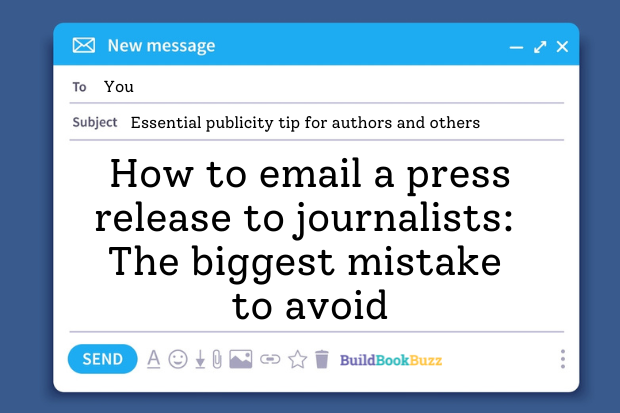 When I won the public relations industry's equivalent of an Academy Award for a publicity campaign built entirely around press releases in the '90s (!), I sent press releases via postal mail.
Those days are gone.
And yet, authors and others regularly ask me if they should mail a printed press release when they have newsworthy information to share.
Nope.
In today's digital society, the only time you should send a printed press release is when you're tucking it inside a review copy. You need to email a press release to a journalist.]]>
When I won the public relations industry's equivalent of an Academy Award for a publicity campaign built entirely around press releases in the '90s (!), I sent press releases via postal mail.
Those days are gone.
And yet, authors and others regularly ask me if they should mail a printed press release when they have newsworthy information to share.
Nope.
In today's digital society, the only time you should send a printed press release is when you're tucking it inside a review copy. You need to email a press release to a journalist.]]>When I won the public relations industry’s equivalent of an Academy Award for a publicity campaign built entirely around press releases in the ’90s (!), I sent press releases via postal mail.
Those days are gone.
And yet, authors and others regularly ask me if they should mail a printed press release when they have newsworthy information to share.
Nope.
In today’s digital society, the only time you should send a printed press release is when you’re tucking it inside a review copy. You need to email a press release to a journalist.
There’s a right way … and there’s a wrong way
There are several reasons why we send press releases with email:
- It’s the 21st century.
- Email lets journalists copy and paste from a press release. Otherwise, they have to retype what’s in the printed document.
- It’s fast.
- It’s so much more cost effective. You’re not paying for paper and postage; nobody is spending time labeling and stuffing envelopes.
- It’s eco-friendly.
Seems obvious, right?
What’s less obvious is that there’s a right way to do it, and there’s a wrong way to do it.
And many, many people who send press releases for a living – publicists – do it the wrong way. I know because I receive their press releases daily.
Their mistake makes sure their message hits the recipient’s trash bin quicker than I close Facebook when I see a snake photo.
You don’t want to make their mistake.
Video tutorial: How to email a press release
I created a step-by-step video to show you how to email a press release to journalists the right way. You can also read the loose transcript of my video instructions under the video. (To see the video steps better, use the “full screen” icon in the lower right of the video box.)
Video transcript
Today I’m going to answer a question I get asked all of the time: What’s the best way to e-mail a press release about your book to a journalist or a reporter?
I can tell you now what the worst way is: Sending it as an attachment.
I know authors do it that way because I receive them in my e-mail.
Journalists – and others — usually won’t open attachments from people they don’t know. That means the press release doesn’t get read, and it could explain some of the disappointing results.
I’ll walk you through the process on my computer screen. It will only take a few minutes.
What you do want to do is copy and paste. You don’t want to attach anything – whether it’s a press release or photos.
- Start with a catchy subject line. Don’t use “press release from author” or “News release.” You can copy and paste the headline of your press release – that can work. I write something catchy and have it prepared in my Word file with the press release. I’ve used “New book shares pro’s press release secrets” because the press release we’re working with announces my book, which teaches authors how to write a book announcement press release.
- Then add a short introduction that personalizes the message and says something like, “I hope you can use this; let me know if you have questions.”
- Copy and paste your press release into the e-mail message form.
- Add your signature.
- Check everything over.
- Fill in the “To” line. If it’s just one person, just type in the e-mail address. If you’re sending it to several at once, you want to protect their privacy and e-mail addresses by not using the “To” space. When sending to more than one person, put all addresses in the BCC line (blind carbon copy) and send it to yourself.
- Hit the send button.
That’s it. In summary, you need:
- A great subject line
- Quick cover note
- The press release copied and pasted
- E-mail signature
- The “To” line and “BCC” line completed (when appropriate)
- Review before sending
Use a press release distribution service for mass distribution
When you want to send your press release to a large media list, you’re better off using a press release distribution service.
When you use a service, all you need to do is write a newsworthy press release and select the media outlets you’d like to receive it. My favorite is eReleases for a number of reasons that include customer service and your ability to be more selective with the media outlets you’ll want on your distribution list.
Because these services continually update their media contacts, they save you a great deal of time. Some even help improve your press release — never a bad thing.
If your list is smaller or more targeted — local media only or specific trade journals, for example — consider creating your own media list. I’ve got instructions for that in “How to build a killer book publicity media list.”
Write a press release the media will use
You now understand how to email a press release to journalists. Do you know how to write one?
The most important thing to remember when writing a press release is that it must mimic a newspaper article. A press release is news content, not an advertisement. Focus on the facts; omit hyperbole.
The most important thing to remember when writing a press release is that it must mimic a newspaper article. A press release is news content, not an advertisement.Click to tweetI’ve got two resources that will help with that (and be sure to read “Author press releases: 10 situations that deserve one and 4 that don’t“).
- Get Your Book in the News: How to Write a Book Announcement Press Release
- Build Book Buzz Publicity Forms & Templates
Get Your Book in the News: How to Write a Book Announcement Press Release walks you through the process, answering your questions before you think to ask them. It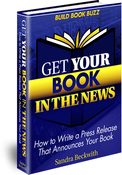 includes lots of examples, a template, and other press release resources that will help you succeed.
includes lots of examples, a template, and other press release resources that will help you succeed.
It’s available as a colorful PDF download with graphics that make it easier to follow and understand the process, and in Kindle format.
Build Book Buzz Publicity Forms & Templates is a collection of fill-in-the-blanks forms for two types of press releases, tip sheets, and 12 other commonly used author press kit and media relations documents. Instructions for each tool and actual samples are included so you have a complete blueprint, whether you’re creating a press release or a Q&A for your site.
Now you’re ready to start sending!
Do you have a question about sending press releases? Please ask it in comment.
(Editor’s note: This article was first published in July 2012. It has been updated and expanded.)
]]>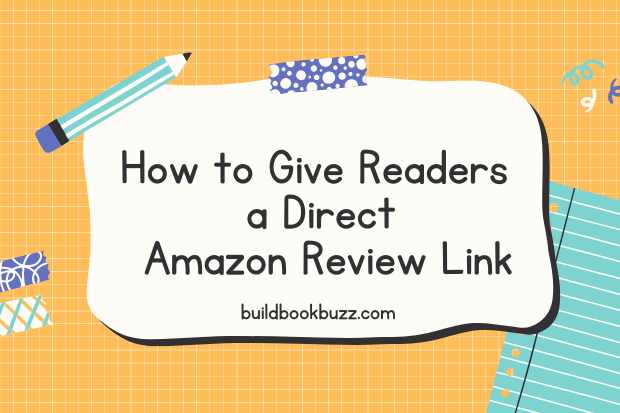 Not getting enough reader reviews on Amazon?
Make it easier for readers by giving them a direct Amazon review link they can use to write an honest reader review.
I’ve created a short video that shows how to send them directly to the review form for your book on Amazon.]]>
Not getting enough reader reviews on Amazon?
Make it easier for readers by giving them a direct Amazon review link they can use to write an honest reader review.
I’ve created a short video that shows how to send them directly to the review form for your book on Amazon.]]>Make it easier for readers by giving them a direct Amazon review link they can use to write an honest reader review.
I’ve created a short video that shows how to send them directly to the review form for your book on Amazon.
Finding your direct Amazon review link
All it takes is a few clicks. Here’s how to do it:
Abbreviated transcript/instructions:
- On your book’s sales page, go to the review stars at the top under the book title. (No reviews yet? I cover that later in the video.)
- Hover your mouse over the stars. Click on “see all customer reviews.” That takes me down the page to my reviews.
- Underneath the summary of reviews, you’ll see the option to “review this product.” Click on “write a customer review.” It takes your readers to the review template. This is where readers review your book.
- To share that specific link, go to top of your screen and copy the URL. Use a URL shortener (I use bit.ly but there are others) to make a shorter version.
- When you don’t have reviews already, from your sales page, scroll down to customer reviews. (You’ll still have the customer review section.) You’ll see the “write a customer review” link. Click on that.
- Copy that URL and shorten it.
- Share the link with readers. In particular, include it when you give them the Build Book Buzz Reader Book Review Form.
- Add it to the end of your book so readers can click on it in the e-version or type it into a browser for the print version.
Why this is important
Like it or not, reader reviews are the “social proof” readers look for when making a decision about buying a book.
Most authors struggle to get reviews, so the easier you make it for readers to write a short, honest, and meaningful review, the more likely they will be to support you with a review.
The easier you make it for readers to write a short, honest, and meaningful review, the more likely they will be to support you with a review.Click to tweetFor help finding readers who write reviews, be sure to read “9 places to look for readers to write reviews” on this site.
What’s your best tip for getting reader reviews? Please tell us in a comment!
]]>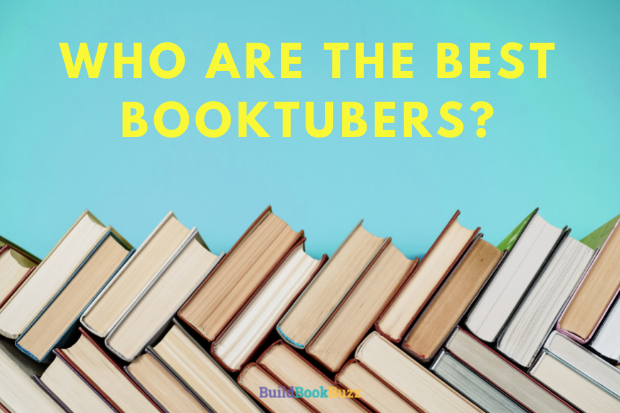 “BookTube” refers to YouTube video bloggers who talk about books.
These book lovers who create the videos are “BookTubers;” their collective accounts, known as “channels,” create the BookTube community.
There are thousands of them producing videos about books. Thousands.
And because readers love their content, book publishers often incorporate them into marketing plans. (Even Michelle Obama did a BookTube tour for Becoming.)]]>
“BookTube” refers to YouTube video bloggers who talk about books.
These book lovers who create the videos are “BookTubers;” their collective accounts, known as “channels,” create the BookTube community.
There are thousands of them producing videos about books. Thousands.
And because readers love their content, book publishers often incorporate them into marketing plans. (Even Michelle Obama did a BookTube tour for Becoming.)]]>These book lovers who create the videos are “BookTubers;” their collective accounts, known as “channels,” create the BookTube community.
There are thousands of them producing videos about books. Thousands.
And because readers love their content, book publishers often incorporate them into marketing plans. (Even Michelle Obama did a BookTube tour for Becoming.)
BookTubers and you
Should you send your book to any of these people in hopes of getting it read and reviewed, or mentioned in a “book haul” (when BookTubers show the books they’ve just bought or borrowed)?
That depends on whether the people reviewing books on YouTube read the types of books you write.
To do that, you first have to find their accounts — channels — and videos.
7 BookTuber lists
You could spend hours and hours wading through Google and YouTube searches to find the best and most popular BookTubers.
Fortunately, you don’t have to. Others have done it for you, and I’m linking to their lists so you can take advantage of their hard work.
Here they are.
1. Reedsy, BookTube Channel Guide
This vetted list features a subscriber count, short description, and link for each of more than 170 BookTubers.
Note that the search box only searches the channel name (I’m not complaining — just explaining). There’s also an option that lets you filter for BookTubers who are also authors.
2. Book Riot, 15 FANTASTIC YOUTUBE BOOK REVIEWERS FOR YOUR VIEWING PLEASURE
This list is far more personal than some of the others, as it’s curated and reported by an individual rather than a team. She tells us why she likes each reviewer and includes an embedded video.
To get to the YouTuber’s channel, click “Watch on YouTube” on each video.
3. Book Scrolling, The Top Booktubers & Book Youtube Channels
You won’t get a description for each of the 23 on the list, but you can preview their content without leaving the list. Each entry links to the channel, too.
Be sure to scroll to the bottom for links to another 72 that didn’t rank at the top.
4. SheReads, Best Booktubers to watch in 2021
Get mini-profiles, photos, channel links, and Instagram account handles for 10 individuals.
5. SheReads, Best BookTubers of 2020
Last year’s list uses the same format as 2021’s — 10 short profiles that describe their content and how it’s presented, plus a photo and link to each channel and Instagram account.
6. Book Riot, 7 BOOKTUBERS WHO TALK ABOUT ADULT BOOKS
If you’re still with me, you might have realized by now that many of the book lovers talking all things books are fans of young adult and teen fiction. To counter that, I’m including this short list for those who write books for an older audience.
As with the other Book Riot list above, you’ll learn what the writer compiling the list likes about each BookTuber and what they read. Each description includes an embedded video or a YouTube channel link.
7. We Are Bookish, 20 Diverse Booktubers to Follow in 2020
This list compiled by a NetGalley staffer features mini-descriptions, an embedded video, and a link to the BookTuber’s channel.
Immerse yourself
If you’re interested in exploring the potential for your books, approach this as a reader and book lover first.
Who talks about the kinds of books you read? Who has an approach or style that you like? Who do you feel drawn to?
Subscribe to their channel; follow their social media accounts. Comment on and share their content, just as you’re doing already with other people you follow and like.
Once you value their content as a reader, you’ll better understand how you might collaborate.
A few more tips
NetGalley’s article, “BookTube Basics for Marketers,” offers tips for finding and engaging with the right BookTubers for the types of books you write, too.
Finally, I hope this underscores the importance of knowing your target audience — your ideal readers. Without that, you can’t assess whether working with BookTubers should be part of your book marketing plan.
Do you have a favorite BookTuber? Who is it, and why? Please tell us in a comment.
]]>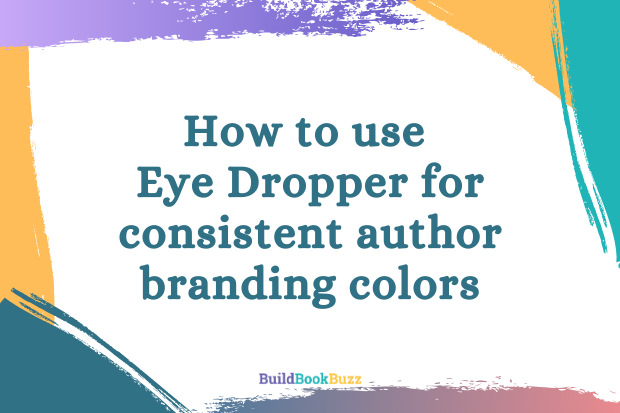 If you're an author who views writing and publishing as a business, you give careful consideration to various elements of your website design. You select site colors and imagery with your target audience in mind.
You're thoughtful about what will resonate with your readers because you know that your website reflects your author brand.
As I explain in "Author branding questions," your brand represents what people think of when they hear your name. It’s a collection of impressions people have of you and your work. You translate those impressions into something visual on your website with colors, photos, and text.]]>
If you're an author who views writing and publishing as a business, you give careful consideration to various elements of your website design. You select site colors and imagery with your target audience in mind.
You're thoughtful about what will resonate with your readers because you know that your website reflects your author brand.
As I explain in "Author branding questions," your brand represents what people think of when they hear your name. It’s a collection of impressions people have of you and your work. You translate those impressions into something visual on your website with colors, photos, and text.]]>You’re thoughtful about what will resonate with your readers because you know that your website reflects your author brand.
As I explain in “Author branding questions,” your brand represents what people think of when they hear your name. It’s a collection of impressions people have of you and your work. You translate those impressions into something visual on your website with colors, photos, and text.
Branding extends beyond your website
Because this branding represents who you are as well as who readers think you are, you want to carry that impression over to anyplace you have an online presence. This includes the headers for your Facebook business page and Twitter and LinkedIn accounts.
For example, here’s how I do it on my Facebook business page.
It also applies to images you create for your blog posts, as well as some of the social media images you create on sites like Canva.com to share on social networks.
Keep your colors consistent
When I create the images I add to the beginning of every blog post here, I mostly use my colors from my logo and header palettes. That’s for branding reasons.
I can match my colors precisely — no guessing needed — not because the designer told me what PMS colors she used. It’s possible thanks to the magic of technology.
I use a free Chrome browser extension called Eye Dropper.
Want to give it a try?
Using Eye Dropper is so easy!
This short video shows you how easy it is to use Eye Dropper to provide consistency with your author branding colors when creating new imagery. I’m demonstrating it with Canva, but you can use it with other similar tools, as well.
Abbreviated transcript/instructions
- Download and install the Eye Dropper Chrome browser extension. It gets added to your browser toolbar.
- Go to a web page with the color you want to match.
- Click on the Eye Dropper icon in your toolbar.
- Select “Pick a color from web page.”
- Move your cursor to the color you want to duplicate and click on it.
- Click on the Eye Dropper icon in your toolbar again. In the “Selected” box of numbers in the upper right, copy the first set of digits.
- Go to the Canva image with the color you want to change. Select the “Background color” box in the upper left.
- Paste the color number you copied in Eye Dropper into the search box to the left of the background color box.
- Double click on the colored square that appears “From your search.”
- Watch the magic happen.
You can also this approach to change other colors in your Canva image, too.
Don’t use Chrome? Google your browser and “eye dropper” or “color picker” to see what’s available.
Eye Dropper is one of my favorite browser extensions. What’s yours? Why? Please tell us in a comment!
]]>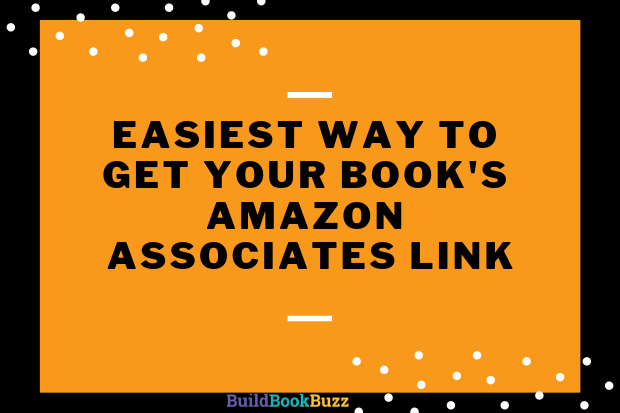 Want to make a few more pennies every time your book is sold on Amazon?
Use an Amazon Associates link in your book promotion.
Amazon Associates is that site's affiliate program. An affiliate program lets a company sell products through others -- "affiliates" -- who market the company's products for a commission. When you sign up for the Amazon Associates program, Amazon is the company with the products and you're the affiliate.
Sign up for the Amazon Associates program here.]]>
Want to make a few more pennies every time your book is sold on Amazon?
Use an Amazon Associates link in your book promotion.
Amazon Associates is that site's affiliate program. An affiliate program lets a company sell products through others -- "affiliates" -- who market the company's products for a commission. When you sign up for the Amazon Associates program, Amazon is the company with the products and you're the affiliate.
Sign up for the Amazon Associates program here.]]>Use an Amazon Associates link in your book promotion.
Amazon Associates is that site’s affiliate program. An affiliate program lets a company sell products through others — “affiliates” — who market the company’s products for a commission. When you sign up for the Amazon Associates program, Amazon is the company with the products and you’re the affiliate.
Sign up for the Amazon Associates program here.
Get your book’s Amazon Associates link quickly and easily
Once you’ve joined the Amazon Associates program, there are two ways to get your affiliate link for your book. You want to use this link when promoting your book because you’ll make a few more cents per sale when people purchase through this link. This is in addition to your royalties through your KDP account.
You’ll also earn a small commission on anything else an individual buys on Amazon during that visit when they go to the site with your affiliate link.
The video below shows you the easiest of the two methods you can use to get your book’s link.
Here’s an abridged version of the video demonstration.
- Make sure you’re logged in to your Amazon Associates account.
- Get a “clean” link for your book. Don’t know how to do that? Watch the video in “The right way to save your book’s Amazon sales page link.”
- Find the “Amazon Associates SiteStripe” at the top of the page, then look in the upper left for “Get link.”
- Select the option you need — text (which is what I use the most), image, or text + image.
- Copy and share the link or embed the coding for “image” or “text + image” on a web page.
Finally, if you’re new to the Amazon Associates program, be sure to read the operating agreement.
Have a question about this? Please share it in a comment.
Tip of the Month
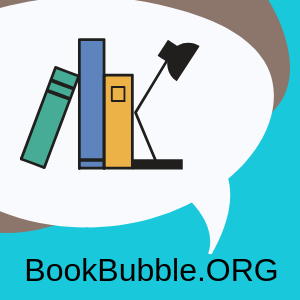 I like to share a “Tip of the Month,” a free resource or tool for authors, on the last Wednesday of the month.
I like to share a “Tip of the Month,” a free resource or tool for authors, on the last Wednesday of the month.
This month it’s BookBubble, a service that will promote your book for free — no strings attached. (I even asked the owner why he doesn’t charge and he said it was a hobby — “an act of service.” Pretty nice of him, right?)
BookBubble, “a resource for book lovers,” lets readers search for books by category using the list on the left side of the page or by search term in the search box.
Want to add your book to the site? Follow the instructions on the “about/submit” page carefully; email the required materials to the address provided on that page. The owner asks that you keep it to one book per author.
It’s easy to do, so there’s no reason not to. You never know where or how that next reader will discover your book. This site’s owner is doing his best to aid that discovery. I’m impressed and grateful. I’ll bet you are, too.
]]>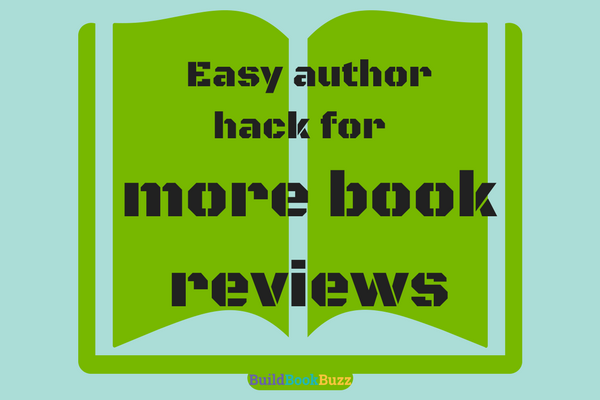 One of my favorite marketing strategies is pretty simple: Study what successful people are doing and copy them.
Authors can do this with the best-selling or well-known authors in their genre or category, too.
That's the approach behind today's hack for getting more book reviews. This one focuses specifically on getting book reviews on blogs.
It will take you seconds -- literally seconds -- to find bloggers who review books just like yours.
Here's a short, 2.5-minute video showing you how to do it.]]>
One of my favorite marketing strategies is pretty simple: Study what successful people are doing and copy them.
Authors can do this with the best-selling or well-known authors in their genre or category, too.
That's the approach behind today's hack for getting more book reviews. This one focuses specifically on getting book reviews on blogs.
It will take you seconds -- literally seconds -- to find bloggers who review books just like yours.
Here's a short, 2.5-minute video showing you how to do it.]]>Authors can do this with the best-selling or well-known authors in their genre or category, too.
That’s the approach behind today’s hack for getting more book reviews. This one focuses specifically on getting book reviews on blogs.
It will take you seconds — literally seconds — to find bloggers who review books just like yours.
Here’s a short, 2.5-minute video showing you how to do it.
Loose transcript for getting more book reviews video
You’ll get more out of this if you watch the short video, but here’s a loose transcript:
- Here’s a quick and easy author hack for finding more blogs that review books in your genre or category.
- It starts with Google. I’ll show you an example for both fiction and nonfiction.
- Type the name of a popular author in your genre or category plus “book review” into the search box.
- You’ll get a list of bloggers that reviewed that author’s books.
- (I go through this process for a romance novelist and a business book author.)
- These bloggers might review your book, too.
More ways to find reviewers
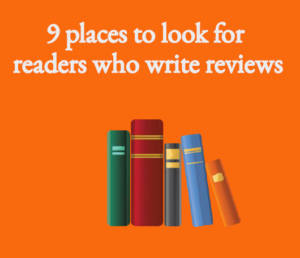 There are many other ways to snag those essential reader reviews, too. They include using social media and paid services.
There are many other ways to snag those essential reader reviews, too. They include using social media and paid services.
For a list of resources you can use to secure reviews, download my free report, “9 places to look for readers who write reviews,” here.
How do you get reviews for your books? What’s working for you right now? Share your best tip in a comment!
]]> How many times have you noticed interesting articles you'd like to read as you've scrolled down through your Facebook newsfeed and thought, "I'd love to read that but I don't have time right now"?
Did you know that a little-known feature lets you save those links to read later?
It's my new favorite time management tool.
Before, I'd either try to remember what I'd seen later when I had more time to read (didn't work) or take a quick screenshot on my phone (only worked if I was looking at Facebook on my phone). Now, with a couple of clicks, I can save everything that interests me and read it later when I have the time (or I'm procrastinating).
I created a short video that shows you how to do it.]]>
How many times have you noticed interesting articles you'd like to read as you've scrolled down through your Facebook newsfeed and thought, "I'd love to read that but I don't have time right now"?
Did you know that a little-known feature lets you save those links to read later?
It's my new favorite time management tool.
Before, I'd either try to remember what I'd seen later when I had more time to read (didn't work) or take a quick screenshot on my phone (only worked if I was looking at Facebook on my phone). Now, with a couple of clicks, I can save everything that interests me and read it later when I have the time (or I'm procrastinating).
I created a short video that shows you how to do it.]]>Did you know that a little-known feature lets you save those links to read later?
It’s my new favorite time management tool.
Before, I’d either try to remember what I’d seen later when I had more time to read (didn’t work) or take a quick screenshot on my phone (only worked if I was looking at Facebook on my phone). Now, with a couple of clicks, I can save everything that interests me and read it later when I have the time (or I’m procrastinating).
I created a short video that shows you how to do it.
Save a Facebook link
Rather read than watch to learn how to save a Facebook link? Here’s a loose transcript.
- On the post you want to read later, put your cursor on the little arrow in the upper right of the post. Click on it.
- Look for “save link.” Click on it.
- To find your saved links, select “home” from your top toolbar, then go to the left side of the screen. Under “explore,” click on “saved.”
Pretty easy, right?
This is a particularly useful resource for authors who are in learning mode.
You’ve probably liked Facebook Pages that help you learn more about writing, publishing, and book marketing, and you’ve joined groups where you can discuss issues, ask for help, or learn from the experiences of others. (Pro tip: you might want to like the Build Book Buzz Page and join the Build Book Buzz discussion group.)
Pages, groups, and some personal profiles often share links to articles that will help you solve a problem or keep you current on industry trends. Personal profiles are more likely to generate posts with links to all kinds of interesting content, from funny videos to newspaper articles on current events to recipes.
There’s a lot there that can teach or entertain us, so learning how to save and access what’s most useful when we have time for it makes a difference.
Time management for authors
It’s all about time management. It feels like there’s never enough time to read, write, market, and do everything else in our lives. Any tool that can help you better manage that time is a gift.
In fact, maybe we can use this post to help fellow authors save time or be more efficient.
What’s your favorite time management tool or tip? Please share it in a comment.
If you can help just one person, it will be worth the couple of minutes it takes to share it. Thank you!
]]>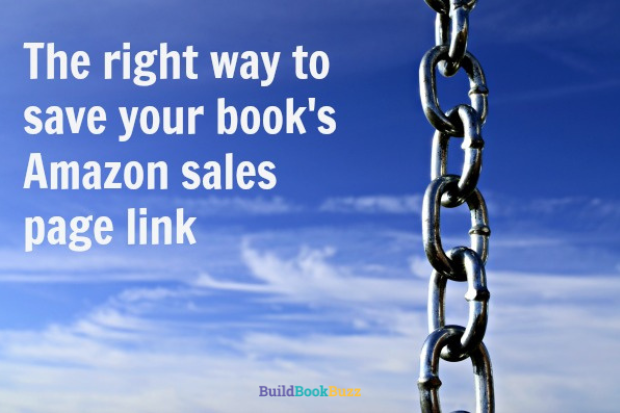 Ever wonder why Amazon removes some of the reviews on your book's Amazon sales page?
It could be because of the way you saved and shared your Amazon sales page link.
There's a right way and a wrong way to do it. When you do it the wrong way, you're signaling to Amazon that you shared the link with lots of people.
When you do it the right way, Amazon doesn't know that book buyers and reviewers got the link to your book's sales page from you rather than on their own.]]>
Ever wonder why Amazon removes some of the reviews on your book's Amazon sales page?
It could be because of the way you saved and shared your Amazon sales page link.
There's a right way and a wrong way to do it. When you do it the wrong way, you're signaling to Amazon that you shared the link with lots of people.
When you do it the right way, Amazon doesn't know that book buyers and reviewers got the link to your book's sales page from you rather than on their own.]]>Ever wonder why Amazon removes some of the reviews on your book’s Amazon sales page?
It could be because of the way you saved and shared your Amazon sales page link.
There’s a right way and a wrong way to do it. When you do it the wrong way, you’re signaling to Amazon that you shared the link with lots of people.
When you do it the right way, Amazon doesn’t know that book buyers and reviewers got the link to your book’s sales page from you rather than on their own.
So how do you do it the right way?
It’s easy. Watch this short, two-and-a half-minute video to find out how.
Did I get this information directly from Amazon?
Nope.
But it’s been widely promoted on the Internet by authors and others. And it makes sense, so I feel comfortable sharing it.
And really, it can’t hurt — it can only help.
Saving your Amazon sales page link with the Associates program
There’s another way to share your link, although it’s comes with restrictions. You can enroll in Amazon’s Associates (affiliate) program so you make a few extra pennies every time someone buys your book with the Associates program link you provide. If you do that, though, note that Amazon doesn’t allow you to send Associates/affiliate links in emails or include them in e-books. You can use them on your website and blog, but that’s it.
Why? Because it’s Amazon.
Learn more about the Amazon Associates program and how to use it on the Amazon website.
If you’re starting to realize that you need to learn more about how to maximize your book’s presence on Amazon so you sell more books, our video training program is for you. “How to Sell More Books on Amazon” teaches everything you need to know. Learn more about the training at this link.
Think other authors might need to learn how to share their Amazon sales page link? Please share this article with friends and colleagues who need to learn this important step.
What other Amazon tips can you offer to help save someone time or frustration?
]]>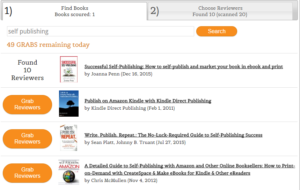 "How do I find reviewers for my book?"
I get this question from authors all the time. And it's a good one.
I often suggest that they follow this three-step process:]]>
"How do I find reviewers for my book?"
I get this question from authors all the time. And it's a good one.
I often suggest that they follow this three-step process:]]>“How do I find reviewers for my book?”
I get this question from authors all the time. And it’s a good one.
I often suggest that they follow this three-step process:
- Find similar books on Amazon.
- Track down the four- and five-star reviewers for those books.
- Ask those reviewers to consider reviewing their book, too.
Not surprisingly, the response is usually, “Won’t that take a lot of time?”
Until now, I’d say “Yes” and suggest that they hire a student to do the digging.
Until now.
Now, I’ve got a much better solution. It’s quick, thorough, easy, and automated (my new favorite word).
Reviewer Grabber tool demonstration
It’s the very cool “Reviewer Grabber” tool — software — created by the team at the Author Marketing Club (affiliate link). The image above is a screenshot of the software in action as it searches for self-publishing book reviewers.
I asked Author Marketing Club founder Jim Kukral to demonstrate how it works so I could videotape it and share it here with you.
Try to see past my “ooooooh, ahhhhhhh” reaction when you watch. I admit I was pretty amazed by how easy it is to use and how helpful it will be in snagging book reviews from the right reviewers.
Watch our Reviewer Grabber demonstration here. It’s long enough to answer all of your questions about the tool while still showing its power pretty soon after Jim starts the demonstration.
Use it yourself
One survey of 300,000 book readers revealed that they are more interested in Amazon reviews than any other kind of review. This tool will help you snag those influential reviews. They’re the ones that give your book credibility with readers and reassure them that they will like it.
The Reviewer Grabber and the corresponding email templates you can use to request reviews are only available to Author Marketing Club (AMC) members. Get all the details at my affiliate link.
Got questions about the Reviewer Grabber? I’ve used it several times and should be able to help. Just ask them in a comment.
Tip of the Month
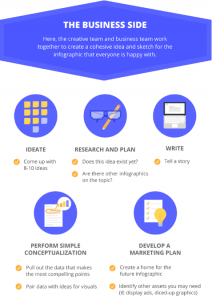 I always share a “Tip of the Month,” a free resource or tool for authors, on the last Wednesday of the month.
I always share a “Tip of the Month,” a free resource or tool for authors, on the last Wednesday of the month.
This month’s comes from Louise Myers’ “Visual Social Media” blog. It’s loaded with information that will help you improve your visual communication.
The resource is a blog post and corresponding white paper on “How to Create an Infographic People Will Rave About.” The post outlines the steps to follow and it links to a site where you can download the white paper. (An infographic is an image-based presentation of information that provides a visual “at a glance” overview of a concept or process.)
Whether you plan to design your own or collaborate with a designer, you’ll get how-to information and advice that will help you make sure the end result is effective . . . and not a waste of time. Have fun with it!
Learn more and get the download link at the Visual Social Media blog.
]]>